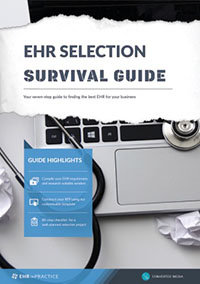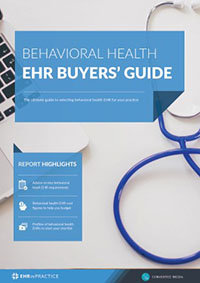Not up to scratch on Meaningful Use? Here’s where to start
CMS announced that they will be utilizing a payment adjustment for hospitals that are not meaningfully using EHR technology. Hospitals that are not meaningfully using EHR are subject to a payment adjustment that begins October 1, 2016. This adjustment is a payment reduction to the percentage increase to the Inpatient Prospective Payment System (IPPS) payment rate. This will negatively impact the reimbursement for hospitals and should be incentive for those hospitals to upgrade their EHR systems.
The fact is that EHRs are here to stay. Therefore hospitals must find a way to make the transition - ideally before payments are negatively impacted. Unfortunately, this date is quickly approaching. Here are some steps and considerations that hospitals should bear in mind while looking for Meaningful Use certified EHRs:
1. Understand the requirements for Meaningful Use
EHR systems are utilized for electronic capture of clinical data. This allows the practice to provide patients with electronic copies of health information, which can be accomplished simply by utilizing a system that offers a patient portal with access to medical documentation. The EHR system should ensure that the system incorporates continuous quality improvement data collection, as Meaningful use supports the goals of the National Quality Strategy. This encourages the use of health information technology for continuous quality improvement at the point of care.
2. Form an EHR selection team and narrow your vendor choices
The EHR selection committee must take the needs of the hospital and clinicians into consideration to determine the best fit for documentation. Once the needs are identified, they can be compared to the offerings of many vendors.
3. Compare EHR specifications to Meaningful Use criteria
Core objectives to meet Meaningful Use criteria include: electronic medication reconciliation, up to date problem and goal lists, maintenance of active medication and allergy information, active demographic information, capturing of core vital signs, reporting of hospital quality control measures, recording of advance directives, patient access to records, and the capability to report lab results, immunization history and syndromic surveillance data. The top vendors must offer these key components for consideration.
4. Hold vendor demonstrations and select the best system for the hospital
The selection committee can use EHR vendor demonstrations to get a realistic idea of how a potential system will work in their hospital. The chosen system will meet all requirements for Meaningful Use and promote efficiency for clinical operations and documentation.
5. Attestation
An eligible hospital can demonstrate that it is meeting requirements for Meaningful Use by successfully attesting through the CMS website or through its state Medicaid EHR Incentive program system. In order to avoid the payment adjustment, first time participation attestation needs to be completed by October 1, 2016.
6. Hardship exception
If the hospital is truly unable to meaningfully use EHR, CMS offers hardship exceptions on an individualized basis. Reasons for hardships may include vendor issues, infrastructure of the hospital setting, natural disasters or unforeseen circumstances, and recent eligibility status. These hardships must be filed online.
Free white paper

EHR Vendor Directory
Get the most up-to-date directory of EHR software vendors. Find the best software for your practice.

Featured white papers
Related articles
-

5 key stakeholders in your EHR selection
Learn about the individuals that, when consulted early and often, can make your EHR selection pro...
-

5 important areas of EHR training during implementation
Successful EHR implementation is not possible without crucial EHR training
-

Top oncology EHRs to kickstart your selection shortlist
Learn about some of the leading oncology EHR systems on the market including CureMD, ARIA Oncolog...




